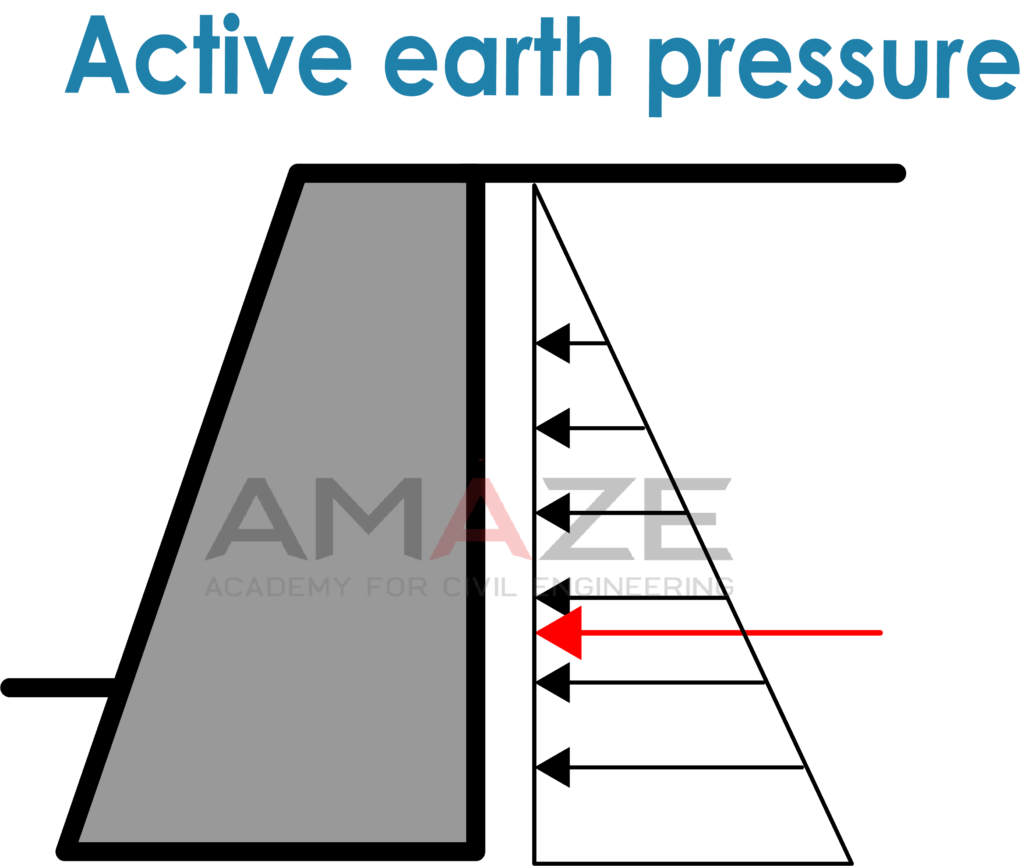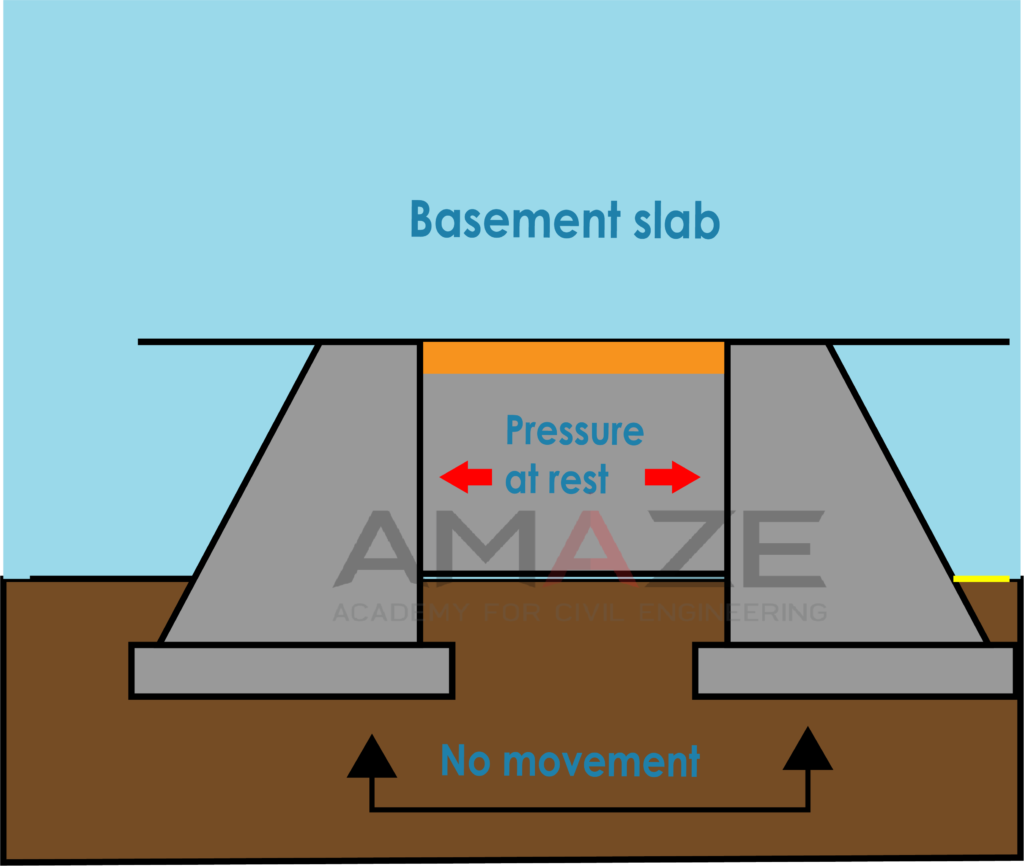Soil excerts a lateral earth pressure on any structure with which it is in contact. In the designing of retaining walls, sheet piles or other earth retaining structures, it is necessary to determine; the lateral earth pressure exerted by the retained mass of soil. The magnitude of the lateral earth pressure depends upon the displacement of retaining structure, nature of soil and boundary conditions.
If the position of the backfill lies above a horizontal plane at the elevation of top of the structure, it is called surcharge. The inclination of the surcharge to the horizontal is called surcharge angle.
Based on the deformation of retaining walls lateral pressure can be one of the following types.
- Active earth pressure: Due to the excessive pressure of the retaining soil, the retaining wall tends to move away from the backfill. Consequently a certain portion of the backfill located immediately behind the retaining wall, gets separated from the rest of the soil mass and hence the soil pressure on the retaining wall decreases. The wedge shaped portion of the backfill tending to move with the wall, is called a failure edge. The retaining wall is kept in equilibrium by the resisting force developed due to shear strength of the soil along the plane of the failure edge in a direction away from the retaining wall. There is a limit with which the retaining wall may move from the backfill, thereby limiting the pressure. The minimum pressure excerted by the soil on the retaining wall is called active earth pressure.

- Passive earth pressure: Whenever the retaining wall moves towards the backfill due to any natural cause, the earth pressure increases because the retaining soil gets compressed and the resulting shear strength develops along the plane of the failure wedge in the direction towards retaining wall. The pressure reaches a maximum limit when the shearing resistance of the soil has been fully mobilized. The maximum earth pressure due to maximum shear stress on the retaining wall is called Passive earth pressure.

- Earth pressure at rest: As active earth pressure is accompanied by the movement of the retaining wall away from the backfill and passive earth pressure is accompanied by the movement of the retaining wall towards the backfill, thus, there occurs an intermediate situation when the retaining wall doesn’t move due to earth pressure but remains perfectly stationary. The pressure which develops due to backfill at zero movement, is called earth pressure at rest. Its value is higher than limiting active pressure but less than the passive pressure.

